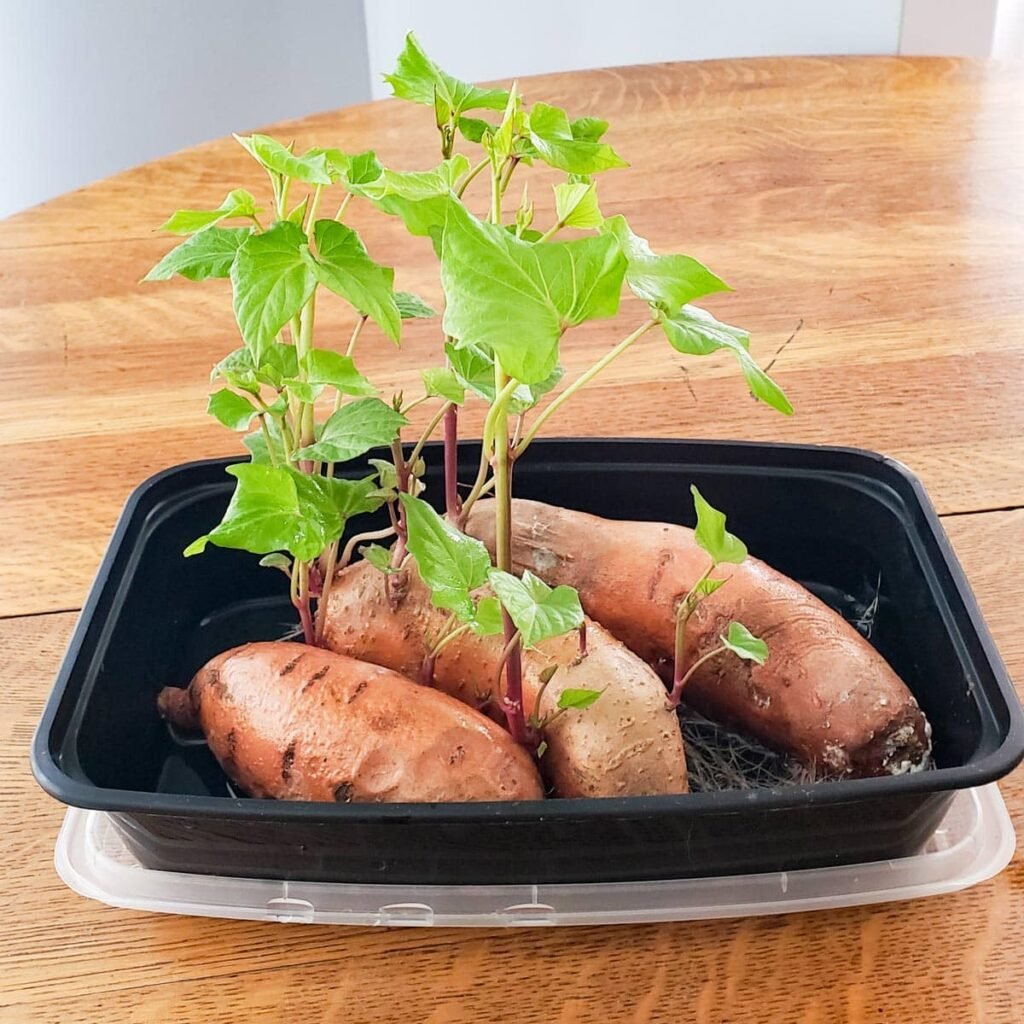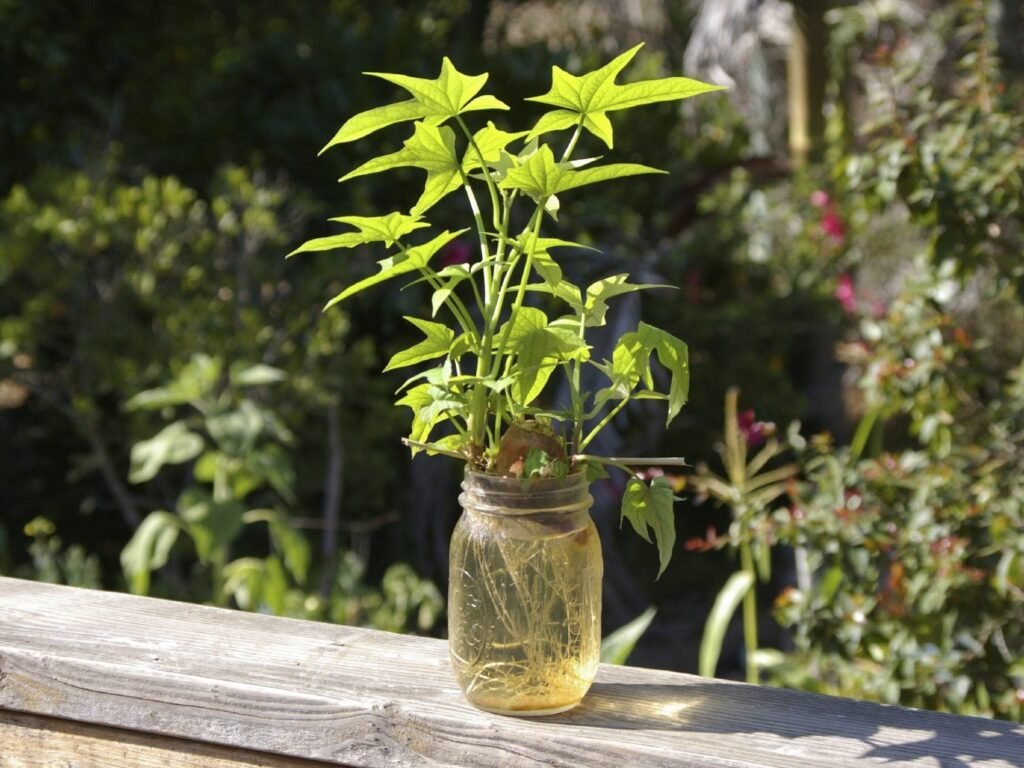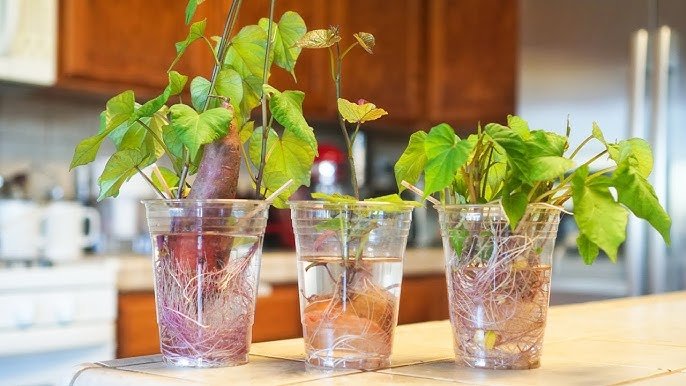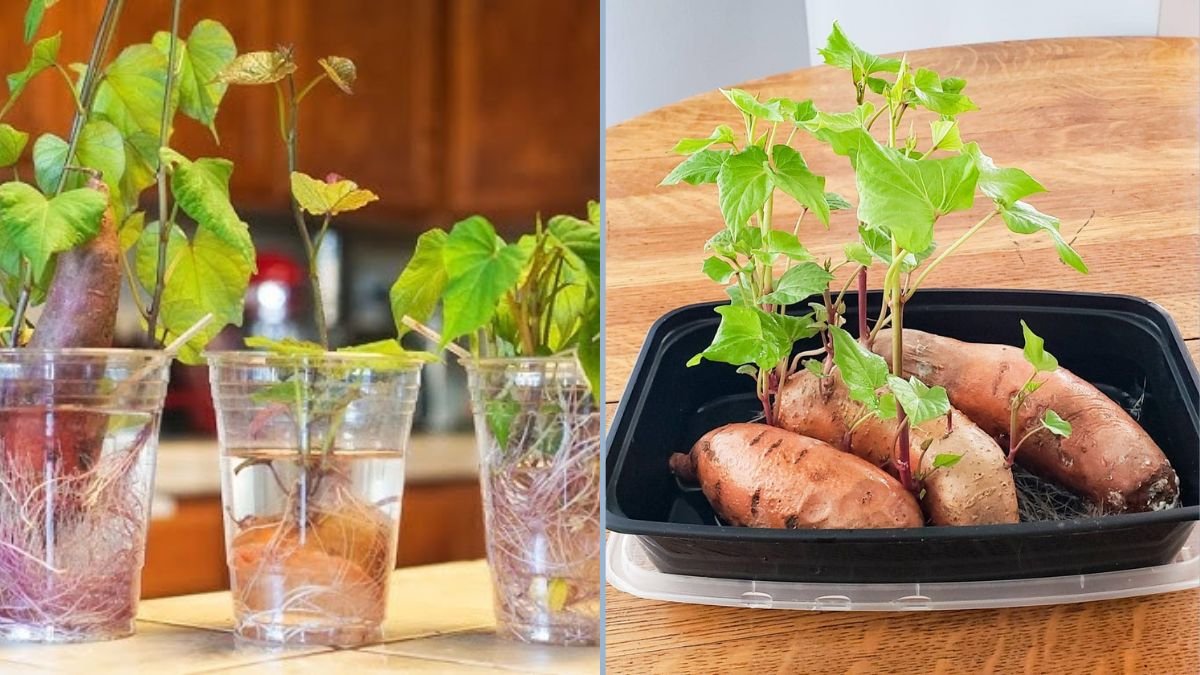Sweet potatoes are not only delicious and nutritious but also incredibly versatile in the kitchen. While most people focus on growing the tubers themselves, sweet potato vines are just as valuable. They grow rapidly, can be harvested continuously for leaves, and even add a beautiful green touch to your home garden. The good news? You don’t need a large garden or complicated setup to grow sweet potato vines—they can easily be grown from cuttings in a pot right at home.
In this guide, we’ll walk you step by step through the process of growing sweet potato vines from cuttings, explain how to care for them, and share tips to maximize growth and yield. Whether you’re a beginner gardener or just looking for a fun indoor gardening project, this method is simple, affordable, and highly rewarding.
Why Grow Sweet Potato Vines from Cuttings?

There are several benefits to propagating sweet potato vines from cuttings rather than planting tubers:
- Fast Growth: Cuttings establish quickly and produce healthy vines in a short time.
- Cost-Effective: You don’t need to buy tubers—just a few cuttings can grow multiple plants.
- Continuous Harvest: You can harvest leaves regularly without killing the plant.
- Beginner-Friendly: Growing from cuttings is simpler than starting from tubers or seeds.
- Indoor and Outdoor Flexibility: Cuttings grow well in pots indoors or on balconies, patios, or small gardens.
Sweet potato vines not only provide edible leaves but also grow vigorously, making them perfect for both edible and ornamental purposes.
Materials You’ll Need

Before you start, gather the following materials:
- Sweet potato vine cuttings (2–4 inches long)
- A clean pot (at least 6–8 inches deep)
- Potting soil or a mix of compost and soil
- Water
- Optional: Fertilizer for faster growth
Using a simple pot and readily available cuttings, you can propagate multiple sweet potato vines without any special equipment.
Step-by-Step Guide to Growing Sweet Potato Vines in a Pot

1. Choose Healthy Cuttings
Select healthy cuttings from a mature sweet potato vine. Look for green, firm stems with at least one or two nodes (the small bumps along the stem where roots will grow). Avoid woody or damaged cuttings, as these are less likely to root successfully.
Cut the vine into 2–4 inch sections, making sure each section has at least one node. These nodes are essential because roots will emerge from them once planted.
2. Prepare the Pot
Choose a pot with drainage holes at the bottom to prevent waterlogging, which can cause root rot. Fill the pot with nutrient-rich potting soil mixed with compost to provide the necessary nutrients for rapid vine growth.
Make sure the soil is loose and well-aerated. Sweet potato vines need space to establish roots and grow vigorously.
3. Plant the Cuttings

Plant the cuttings vertically in the soil, burying the nodes about 1–2 inches deep while keeping the top portion of the cutting above the soil. Firm the soil gently around the base to hold the cutting in place.
Spacing is important if planting multiple cuttings in one pot—leave at least 2–3 inches between each cutting to prevent overcrowding and ensure strong growth.
4. Watering and Moisture
Immediately after planting, water the soil thoroughly until it is evenly moist but not soggy. Sweet potato cuttings root best in consistently damp soil.
Maintain soil moisture by watering regularly, especially in hot or dry conditions. Avoid overwatering, as soggy soil can cause the cuttings to rot. A good rule of thumb is to keep the soil lightly moist at all times.
5. Provide Adequate Sunlight

Sweet potato vines thrive in bright, indirect sunlight. Place your pot near a window, balcony, or outdoor area that receives at least 4–6 hours of sunlight daily.
If growing indoors with limited natural light, consider using an LED grow light to supplement sunlight for 12–14 hours a day. Proper light exposure ensures healthy, vigorous vines.
6. Fertilization
While sweet potato vines can grow in regular potting soil, providing additional nutrients accelerates growth. Use a mild, balanced fertilizer once every 2–3 weeks to encourage strong leaves and longer vines.
Organic options, such as compost tea or liquid seaweed fertilizer, work well and are safe for edible leaves.
7. Maintenance and Care
To keep your sweet potato vines healthy:
- Prune regularly: Trim older or damaged leaves to encourage new growth.
- Support growth: If the vines start trailing extensively, you can provide stakes or trellises to support vertical growth.
- Monitor for pests: Sweet potato vines can attract aphids or whiteflies. Use organic pest control methods if needed, such as neem oil.
- Rotate the pot: Turn the pot occasionally to ensure all vines receive even sunlight exposure.
With proper care, your cuttings will start rooting within 1–2 weeks, and you’ll see vigorous leaf growth shortly after.
Harvesting Sweet Potato Vines
Sweet potato leaves can be harvested once the plant is well-established, usually 4–6 weeks after planting.
- Leaf harvesting: Pick the outer leaves first, leaving the inner leaves to continue growing. This allows continuous harvests without damaging the plant.
- Vine trimming: Trim long trailing vines if needed to encourage bushier growth and prevent overcrowding.
Harvested sweet potato leaves are tender, nutritious, and can be cooked like spinach, added to soups, stir-fries, or eaten raw in salads.
Tips for Maximum Growth
- Use Healthy Cuttings: Fresh, green cuttings root faster and grow more vigorously.
- Provide Ample Sunlight: Vines need light for strong leaves and long trailing stems.
- Maintain Moist Soil: Avoid letting soil dry out completely; consistent moisture promotes rooting.
- Fertilize Regularly: Nutrients from fertilizer or compost encourage faster, fuller growth.
- Use Large Pots: Bigger pots allow more space for roots and trailing vines, resulting in larger plants.
By following these tips, you can maximize the growth and yield of your sweet potato vines in pots.
Common Problems and How to Solve Them
Even though growing sweet potato vines from cuttings is simple, beginners may face a few challenges:
- Wilting or yellowing leaves: Often caused by under or overwatering. Adjust watering schedule as needed.
- Slow growth: Ensure cuttings are healthy and receive enough sunlight. Fertilize to promote growth.
- Root rot: Make sure your pot has proper drainage and avoid overwatering.
- Pest infestations: Inspect leaves regularly and use organic pest control methods if necessary.
Monitoring your plants and addressing these issues early ensures healthy, productive vines.
Benefits of Growing Sweet Potato Vines at Home
- Continuous Food Source: Harvest fresh, nutritious leaves for meals without waiting for tubers.
- Cost Savings: Propagate multiple plants from a single vine cutting.
- Space-Efficient Gardening: Ideal for small indoor spaces, balconies, or patios.
- Sustainable Gardening: Reuse plant cuttings and reduce waste.
- Educational: A fun, hands-on gardening project for adults and kids alike.
Growing sweet potato vines from cuttings is an easy and rewarding way to bring fresh greenery into your home and enjoy nutritious edible leaves.
Conclusion
Propagating sweet potato vines from cuttings in a pot is a beginner-friendly, low-cost, and highly productive way to enjoy home-grown greens. With minimal materials, proper care, and a bit of patience, you can grow healthy, vigorous vines that provide continuous harvests of tender, nutrient-rich leaves.
This method is perfect for urban gardeners, small-space dwellers, or anyone looking to grow their own food sustainably. Start with a few cuttings today, follow these steps, and in just a few weeks, you’ll enjoy fresh, home-grown sweet potato leaves straight from your pot.
Whether for cooking, garnishing, or simply adding greenery to your space, sweet potato vines grown from cuttings are a practical and rewarding gardening project for any home.
